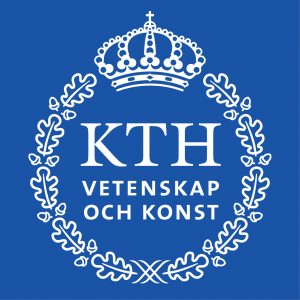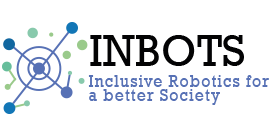 We interview Susanne Frennert, PhD Rehabilitation Engineering and member of the KTH team at INBOTS leader of the WP 6.
We interview Susanne Frennert, PhD Rehabilitation Engineering and member of the KTH team at INBOTS leader of the WP 6.
Which is the role of KTH in the INBOTS project?
KTH is the Royal Institute of Technology in Sweden. We are responsible for one third of Sweden’s capacity for technical research and is the country’s largest organizer of technical/engineering education at university level. As such, we can contribute with our knowledge, expertise and research, as well as experience from various EU projects.
Our role in the INBOTS project is to bring together a variety of stakeholders to exchange ideas and expertise, and co-create experience-based evidence through knowledge generation, dissemination and sharing, raising awareness about robotics – pros and cons (considering effects and potential impacts on the environment and society), promoting interest and acceptance of robotics and bringing attention to the connection between robotics development and societal development.
What is the entry point for the WP6 tasks?
Our entry point is to identify gaps and needs related to the current level of understanding of robotics by public and to define a common strategy to increase public awareness about interactive robotics.
For achieving this aim, we have involved potential end users from the beginning of the work. We have organized design workshops with older people, frontline care professionals and unit managers, and will continuously organize design workshops with different stakeholders (general public, community and interest organizations, target persons and their families, researchers and policymakers).
Which are the working guidelines?
WP6 Working guidelines follow the INBOTs project guidelines and policies. Bi-monthly tele-meetings and physical work package meetings. We also have continuous interactions and discussions between all the WP6 participants.
What are you pretending to achieve?
In WP6 we aim to promote societal and socio-economic uptake of robotics. We are just about to finalise our white paper regarding Interactive Robotics Public Awareness and Acceptance. The white paper aims increase the knowledge of acceptance, access and use of interactive robots among the public, being citizens in the European Union and associated countries – Iceland and Switzerland.
With who are you collaborating?
In WP6, we collaborate with of all WP6 participants and unify our knowledge, expertise and experience. The result of our work is presented at conference workshops and in the above-mentioned white paper.
Which are the main challenges?
The main challengers are that interactive robotics are a moving target due to the fast pace at which robotics and machine learning evolve. It puts us in the middle of a so called Collingridge dilemma. The dilemma can be described as follows: (a) the impact of interactive robotics cannot be easily predicted until the technology is extensively developed and diffused; and (b) changing and controlling interactive robotics are difficult because although it is easy and affordable to make changes when interactive robots are in their infancy, the requirements are often unrecognisable and unpredictable; when interactive robotics are more mature, the requirements and needs for change are more predictable and recognisable but will be more costly and difficult to address.
Predicting the uptake of interactive robots is difficult and almost impossible. Technological innovations are taking place within a social and economic context. They wherefore are subjected to several interactions and negotiations within the social, economic, political and cultural context in which they emerge. Some interactive robots will move from anonymous and alien commodities to become powerfully integrated into the lives of their users while others will pass into obscurity. Grint and Woolgar proposed that technology could be seen as open texts. In this sense an interactive robot is “written” or configured by developers and in marketing, targeting a certain group of users. These users, however, interpret the robot and make sense of and give meaning to it. As such, interactive robots are both shaped by the users and is shaping the users in a number of enabling and constraining ways. While predicting the uptake of interactive robots is difficult, promoting the uptake of interactive robots has to do with power and politics. The level of production power shapes what kind interactive robots gets produced and distributed. As Winner (1986) showed in his example of the bridges built in Long Island (that only enabled cars but not busses to pass from the inner city): “artifacts have politics”.
